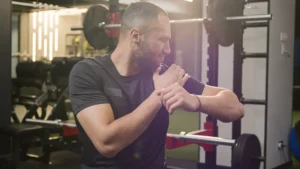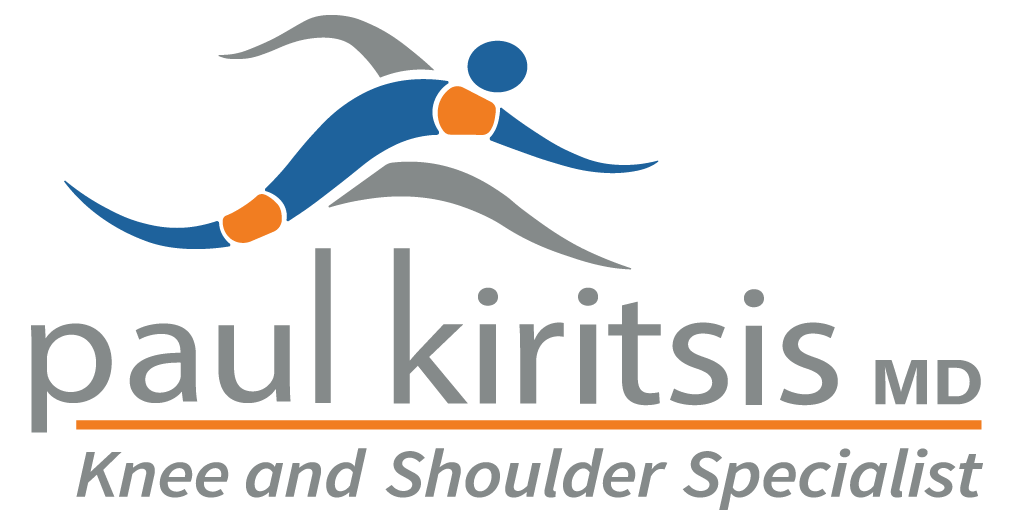How long does pain last after reverse shoulder replacement? Most patients experience significant pain reduction within the first six weeks, and most post-surgery pain subsides by three to six months. Factors like the severity of pre-existing shoulder damage and how well you follow your recovery plan can influence this timeline. In this post, we’ll explore the typical pain trajectory and provide tips for managing discomfort during your recovery journey.
Key Takeaways
- Significant pain reduction is typically observed within the first three months post reverse shoulder replacement surgery, although pain levels and recovery timelines can vary among patients.
- The Precision Shoulder Replacement procedure, featuring the use of EXPAREL, offers an advanced approach to pain management by providing extended pain relief without the use of opioids, leading to smoother recovery and shorter hospital stays.
- A multimodal pain management strategy that includes medication, physical therapy, and proper wound care is essential for effective recovery, with significant pain relief generally achieved around the six-week mark, and full recovery taking about three to six months.
Understanding Post-Surgery Pain
Post-surgery, most patients report a significant reduction in shoulder pain, with average pain scores dropping from 6 to 2 out of 10. This marked improvement is generally seen within the first three months after the surgery. However, one should recognize that pain levels can significantly differ among patients, particularly in the shoulder blade area and the shoulder joint. Some may experience severe pain that diminishes over time, while others might face a more gradual reduction in discomfort. Many patients will experience a significant reduction in their pre-surgical pain levels within the first two weeks after surgery.
Swelling and tenderness around the shoulder are common in the first few weeks following surgery, typically lasting between 2 to 4 weeks. Recognizing this variability aids in setting realistic expectations and preparing for the recovery journey ahead. Knowing that pain and swelling are part of the healing process can make the initial recovery period more manageable.
An Improved Approach to Pain Management with Precision Shoulder Replacement
The Precision Shoulder Replacement procedure that I designed, marks a significant advancement in pain management for reverse total shoulder replacement. This innovative approach to shoulder replacement surgery utilizes EXPAREL, a non-opioid, extended-release local anesthetic, to provide superior postoperative pain management. EXPAREL’s extended-release formulation ensures that pain relief is sustained for several days, reducing the need for traditional pain medications.
EXPAREL works by blocking sodium channels, inhibiting the generation and conduction of nerve impulses triggered by painful stimuli. This mechanism of action allows it to provide effective pain relief without the side effects associated with opioids. The use of EXPAREL in shoulder replacement surgery has shown significant reductions in pain, opioid usage, and hospital stay durations, demonstrating its effectiveness in postoperative pain control.
Incorporating EXPAREL into the Precision Shoulder Replacement procedure may offer several benefits:
- Smoother recovery
- Diminished reliance on narcotics
- Pain relief
- Enhanced overall recovery experience
- Quicker return to daily activities
First Few Weeks After Surgery
Healing and recovery are highly dependent on the first few weeks following shoulder surgery. Patients are typically immobilized in a sling for four weeks to protect the shoulder and allow soft tissues to heal. This immobilization period facilitates bone growth into the implant, a crucial factor for the long-term success of the surgery.
During the initial 4 weeks, patients are asked not to lift their arm on their own power but they are able to do Activities with their elbow at their side, like typing, writing and eating. After four weeks, patients are able to do the following daily activities:
- lifting a cup of coffee
- brushing their teeth
- combing their hair
- eating with utensils
Gentle therapy exercises usually begin in the first two weeks after surgery, aiding in the recovery process. These exercises are designed to promote mobility without compromising the healing tissues. Engaging in these activities as advised by your healthcare provider helps in regaining strength and functionality, setting a solid foundation for further physical therapy.
Pain Management Strategies
A smooth recovery heavily relies on effective pain management strategies. Surgeons often prescribe a multimodal pain control plan that includes scheduled acetaminophen (Tylenol) and anti-inflammatory medications, along with ‘as-needed’ narcotic pain medicines. This approach minimizes the use of narcotics, which have significant side effects and risks, including addiction.
Managing pain post-surgery significantly benefits from physical therapy. Under the guidance of a physical therapist, patients engage in exercises that help alleviate pain and improve shoulder function. These exercises are tailored to the patient’s recovery stage and are pivotal in reducing stiffness and promoting healing.
In addition to medication and physical therapy, applying ice to the shoulder can significantly reduce pain and swelling during the first couple of weeks. Ice packs or the ice machine should be applied for 20 to 30 minutes, three to four times a day, to achieve optimal results. This simple yet effective strategy can provide excellent pain relief and aid in the overall recovery process.
Physical Therapy and Pain
Early mobilization and consistent physical therapy exercises are key components of the recovery process, especially after an upper arm bone surgery. Very small movements in the hand, wrist, and elbow focusing on range of motion are started a few days after surgery. Patients are encouraged to stay consistent with these exercises to avoid stiffness, which can lead to pain.
Physical therapy is not just about moving the shoulder; it’s about moving it correctly and safely. Therefore, a successful recovery heavily relies on adhering to the prescribed physical therapy regimen.
Under the guidance of a physical therapist, patients learn specific exercises that help in regaining strength and mobility. These exercises are adjusted over time as the shoulder heals, gradually increasing in intensity to match the patient’s progress. This structured approach ensures that pain is managed effectively while promoting optimal recovery. You’ll be provided exercises in your post-surgical packet and it is recommended that you initiate those the day after surgery.
When to Expect Significant Pain Relief
Most patients notice significant pain reduction within the first few weeks. The first four weeks are often the most challenging during the recovery period, but with proper pain management strategies, the discomfort gradually subsides. This period sets the foundation for long-term recovery.
Overall recovery from reverse shoulder replacement takes about three to six months. While significant pain relief is typically achieved within the first four weeks, patients can expect continued improvement in shoulder function and further reduction in pain over the next few months. Patience and adherence to the prescribed recovery plan are key to achieving the best outcomes.
Tips for Managing Pain at Home
Pain management at home plays a pivotal role in the recovery journey. Consistent use of a sling for the first four weeks post-surgery helps reduce strain on the shoulder and promotes healing. Ensuring proper sleep by resting the shoulder and elbow on a rolled-up towel or small pillow can also aid in pain management.
Proper wound care is essential to prevent infections, which can prolong pain and complicate recovery. Avoiding showering until after the follow-up appointment and keeping the wound dressing clean and dry are vital steps in this process.
Following prescribed exercises diligently can help maintain mobility and reduce stiffness. These exercises, combined with other pain management strategies, can significantly alleviate pain and contribute to a smoother recovery.
Importance of Follow-Up Appointments
Regular follow-up appointments aid in monitoring recovery progress and the correct functioning of the shoulder implant, including the rotator cuff. The first follow-up appointment is typically scheduled two weeks after surgery, where stitches are removed, and an X-ray of the shoulder is taken.
Subsequent follow-up visits occur at the following intervals:
- Around four weeks post-surgery
- Three months post-surgery
- Six months post-surgery
- 12 months post-surgery
These visits are conducted to assess recovery, adjust treatment plans, and monitor implant status. After the first year, annual visits are recommended to ensure the continued proper function of the shoulder implant. These appointments are vital for addressing any issues early and ensuring a successful long-term outcome.
Summary
In summary, reverse shoulder replacement surgery can significantly reduce shoulder pain and improve function, but it requires a well-coordinated recovery plan. Immediate post-operative pain management, advanced techniques like EXPAREL, and consistent physical therapy are key components in this journey. Understanding the factors that influence pain duration and adhering to prescribed pain management strategies can help ensure a smoother recovery.
Ultimately, the goal is to return to a pain-free, active lifestyle. By following the advice and guidelines provided, patients can navigate their recovery with confidence and achieve excellent outcomes. Remember, your healthcare team is there to support you every step of the way.
Frequently Asked Questions
How long does pain last after reverse shoulder replacement?
Pain after reverse shoulder replacement usually reduces significantly at around four weeks, with continued improvement over three to six months. Patients who undergo Precision Shoulder Replacement may experience a faster recovery.
What is EXPAREL, and how does it help with pain management after reverse shoulder replacement?
EXPAREL is a non-opioid, extended-release local anesthetic that offers several days of pain relief after surgery, decreasing the necessity for traditional pain medications.
When can I start physical therapy after reverse shoulder replacement?
You can start gentle therapy exercises in the first two weeks after surgery, and progress to more intensive physical therapy as healing continues. Aim to follow this gradual approach for a successful recovery.
What should I do if I experience persistent pain after surgery?
You should consult a healthcare professional to assess the cause and find the right management for your persistent pain after surgery.
How important are follow-up appointments after reverse shoulder replacement?
Follow-up appointments after reverse shoulder replacement are crucial for monitoring recovery, assessing implant status, and making necessary adjustments to the treatment plan. Regular follow-ups can ensure the best possible outcome for your shoulder replacement surgery.





